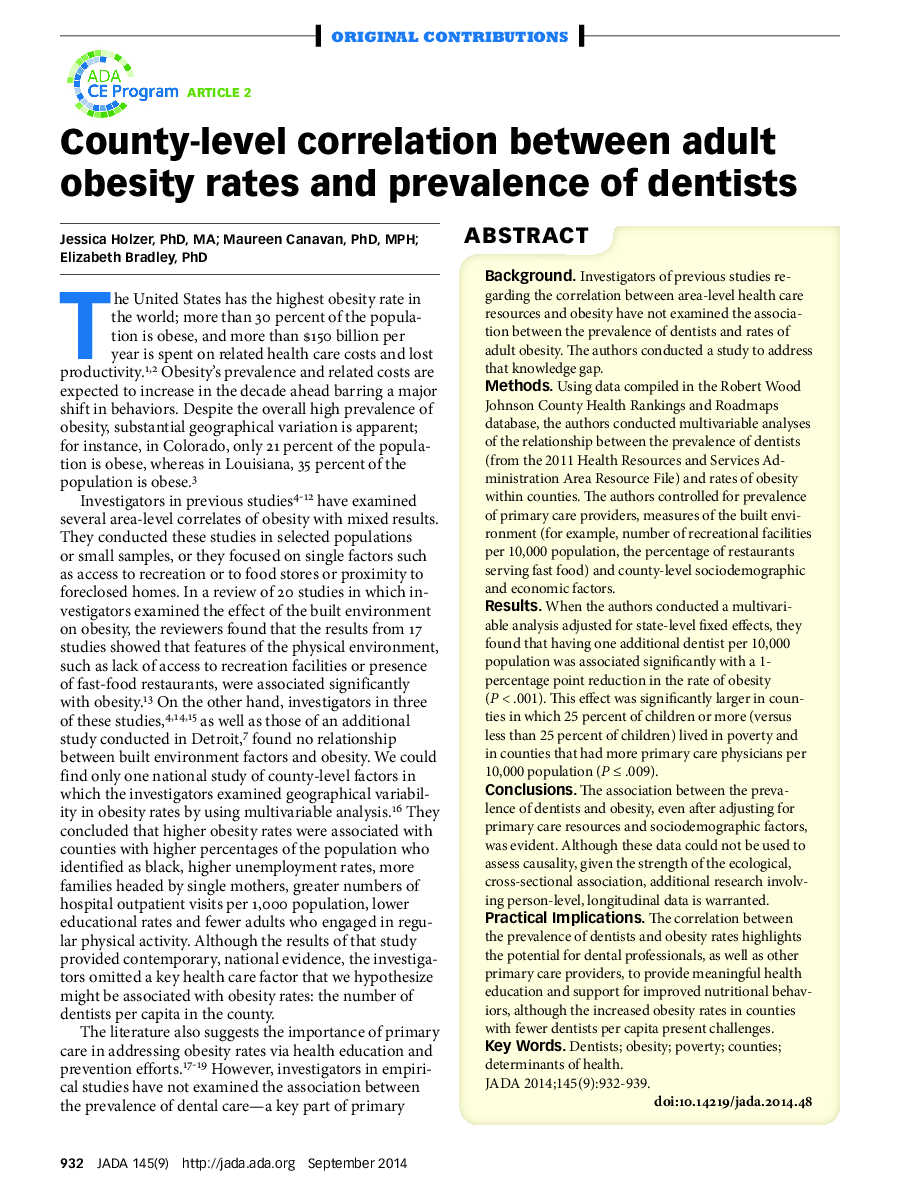| Article ID | Journal | Published Year | Pages | File Type |
|---|---|---|---|---|
| 3137181 | The Journal of the American Dental Association | 2014 | 8 Pages |
ABSTRACTBackgroundInvestigators of previous studies regarding the correlation between area-level health care resources and obesity have not examined the association between the prevalence of dentists and rates of adult obesity. The authors conducted a study to address that knowledge gap.MethodsUsing data compiled in the Robert Wood Johnson County Health Rankings and Roadmaps database, the authors conducted multivariable analyses of the relationship between the prevalence of dentists (from the 2011 Health Resources and Services Administration Area Resource File) and rates of obesity within counties. The authors controlled for prevalence of primary care providers, measures of the built environment (for example, number of recreational facilities per 10,000 population, the percentage of restaurants serving fast food) and county-level sociodemographic and economic factors.ResultsWhen the authors conducted a multivariable analysis adjusted for state-level fixed effects, they found that having one additional dentist per 10,000 population was associated significantly with a 1- percentage point reduction in the rate of obesity (P < .001). This effect was significantly larger in counties in which 25 percent of children or more (versus less than 25 percent of children) lived in poverty and in counties that had more primary care physicians per 10,000 population (P ≤ .009).ConclusionsThe association between the prevalence of dentists and obesity, even after adjusting for primary care resources and sociodemographic factors, was evident. Although these data could not be used to assess causality, given the strength of the ecological, cross-sectional association, additional research involving person-level, longitudinal data is warranted.Practical ImplicationsThe correlation between the prevalence of dentists and obesity rates highlights the potential for dental professionals, as well as other primary care providers, to provide meaningful health education and support for improved nutritional behaviors, although the increased obesity rates in counties with fewer dentists per capita present challenges.
